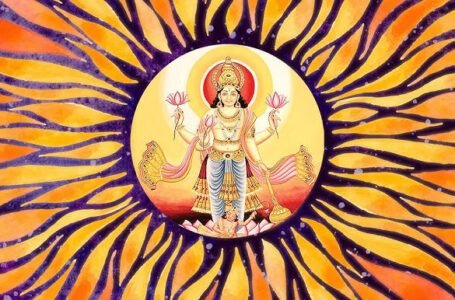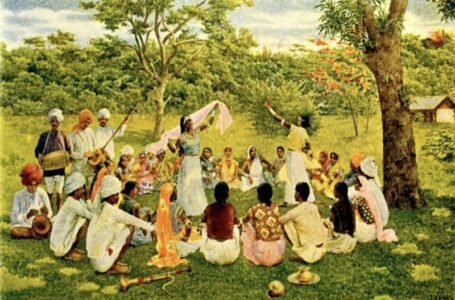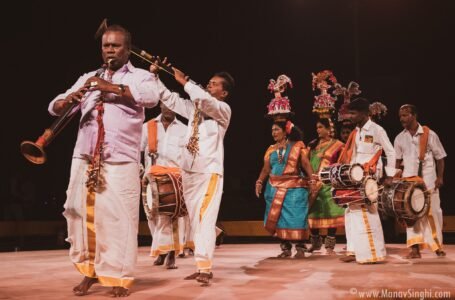Exploring the Vibrant World of Tabla Gharanas: A Journey through India’s Rich Rhythmic Traditions

“Exploring the Vibrant World of Tabla Gharanas: A Journey through India’s Rich Rhythmic Traditions”
INTRODUCTION
The tabla is a popular percussion instrument from India that has gained worldwide recognition for its unique sound and versatile applications. With its roots in classical Indian music, the tabla has been an integral part of many traditional and modern music genres, including fusion, jazz, and world music. One of the fascinating aspects of tabla playing is the various schools or traditions known as gharanas, each with its own distinctive style and approach to playing the instrument. In this blog, we will explore the diverse world of tabla gharanas and delve into the techniques, repertoire, and history of this fascinating instrument. From the complex and fast compositions of the Delhi gharana to the expressive and emotional rhythms of the Punjab gharana, we will take a journey through India’s rich rhythmic traditions and discover the unique beauty and depth of tabla playing.

ORIGIN OF TABLA GHARANA
The origin of tabla gharana can be traced back to the medieval period of India when music was an essential part of the cultural fabric. The tabla was initially used as an accompanying instrument for vocal and instrumental music in the courts of the Mughal emperors. As the instrument gained popularity, various musicians and artists began to develop their unique style and approach to playing the tabla. Over time, these styles became known as gharanas, and each gharana represented a unique lineage of tabla playing with its distinct musical language, repertoire, and technique.

The first gharana to emerge was the Delhi gharana, which dates back to the early 19th century. This gharana was established by Ustad Shamsuddin Khan, who was a court musician of the Mughal emperor. The Delhi gharana is known for its use of fast and intricate compositions and its emphasis on precision and clarity of sound.
In the early 20th century, several other gharanas emerged, such as the Farukhabad gharana, which was established by Ustad Haji Vilayat Ali Khan, and the Punjab gharana, which originated in the region of Punjab and is known for its use of emotive and expressive rhythms. Other gharanas, such as the Ajrara gharana and the Benares gharana, also emerged during this period, each with its own unique style and approach to playing the tabla.
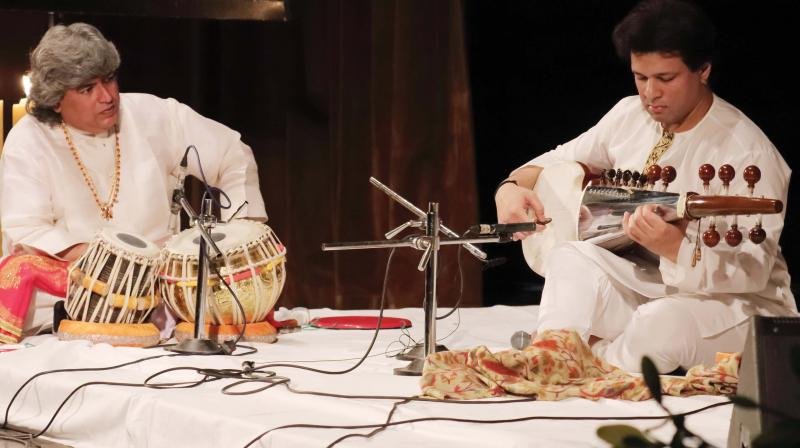
Today, tabla gharanas continue to evolve, with new artists and musicians exploring and expanding upon the existing repertoire and technique. Despite these changes, the gharana system remains an essential aspect of the tabla tradition, providing a rich and diverse tapestry of musical expressions and styles for future generations to explore and learn from.
LEADERS OF TABLA GHARANA
Tabla gharanas do not have a single designated leader, as each gharana is made up of many musicians and artists who contribute to its development and evolution. Instead, each gharana has a lineage of celebrated musicians who have played a significant role in shaping and defining its unique style and approach to playing the tabla.
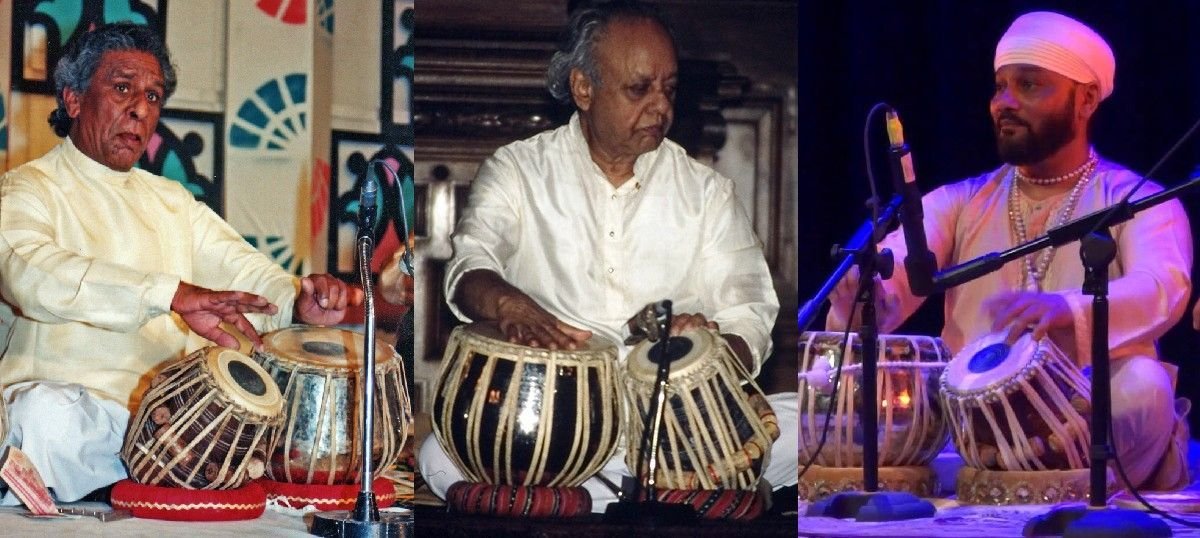
For example, the Delhi gharana has produced several renowned musicians, including Ustad Ahmed Jaan Thirakwa, who is widely regarded as one of the greatest tabla players of all time. Thirakwa’s innovative style and use of complex compositions have had a significant influence on the development of tabla playing in India.
Similarly, the Punjab gharana has produced many notable musicians, including Ustad Alla Rakha, who was a disciple of the legendary Ustad Ahmed Jan Thirakwa. Alla Rakha is perhaps best known for his collaborations with the renowned sitar player Pandit Ravi Shankar, which helped to popularize Indian classical music worldwide.
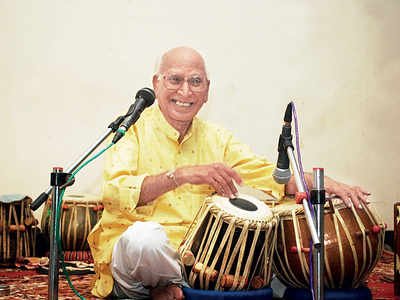
The Farukhabad gharana has also produced several notable musicians, including Ustad Zakir Hussain, who is one of the most prominent tabla players in the world today. Hussain is known for his virtuosity and versatility, and his innovative approach to tabla playing has helped to push the boundaries of the instrument.
Overall, each tabla gharana has its lineage of celebrated musicians, and their contributions to the development and evolution of the gharana continue to inspire and influence new generations of tabla players.
TYPES OF TABLA GHARANA
There are several prominent tabla gharanas, each with its unique approach to technique, repertoire, and style. Some of the most well-known tabla gharanas are:

- Delhi Gharana: The Delhi gharana is known for its use of complex and fast compositions, and its emphasis on clarity of sound and precision.
- Ajrara Gharana: The Ajrara gharana is known for its use of bol-baant (the art of dividing the syllables of a rhythm into different parts), and its emphasis on improvisation and creativity.
- Farukhabad Gharana: The Farukhabad gharana is known for its use of subtle and intricate variations, and its emphasis on melody and rhythm.
- Benares Gharana: The Benares gharana is known for its use of complex and virtuosic compositions, and its emphasis on speed and power.
- Punjab Gharana: The Punjab gharana is known for its use of a wide range of rhythms and its emphasis on the expressive and emotional aspects of tabla playing.
- Lucknow Gharana: The Lucknow gharana is known for its use of delicate and intricate compositions, and its emphasis on tonal quality and clarity of sound.
- Banaras-Allahabad Gharana: The Banaras-Allahabad gharana is a combination of the Banaras and Allahabad gharanas and is known for its use of unique compositions and emphasis on improvisation and creativity.
- Farrukhnagar Gharana: The Farrukhnagar gharana is a small gharana known for its use of complicated and complex compositions.
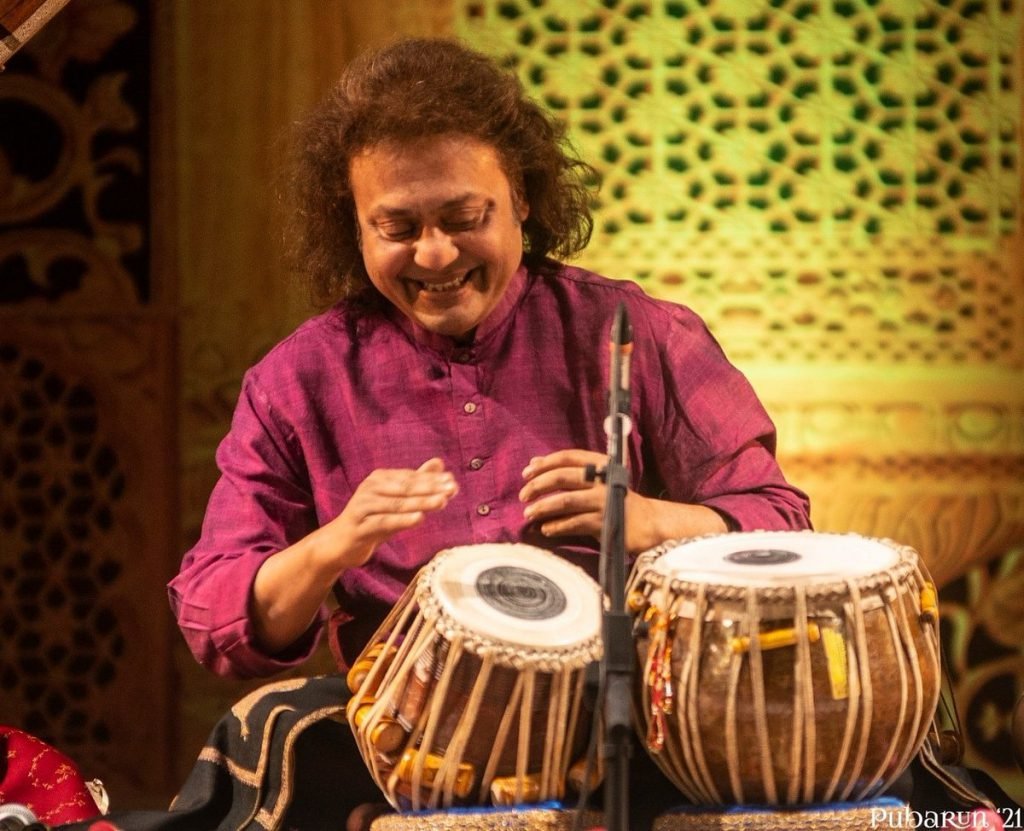
Each tabla gharana has its unique style, repertoire, and technique, and learning about these different gharanas can provide a deeper appreciation and understanding of the rich and diverse tradition of tabla playing in India.
FEATURE OF TABLA GHARANA
Tabla gharanas are characterized by a unique set of features, which distinguishes them from one another. Some of the key features of tabla gharanas are:
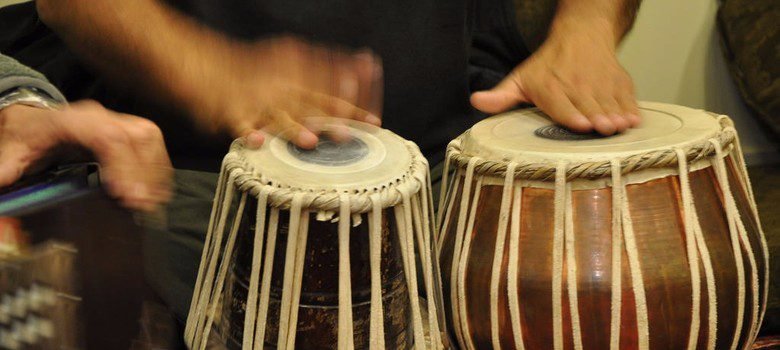
- Repertoire: Each tabla gharana has its unique repertoire of compositions, which are specific to that gharana. These compositions are often passed down from teacher to student and are an essential part of the gharana’s tradition and identity.
- Technique: Each tabla gharana has its unique approach to playing the instrument, which involves a particular technique of striking the drumheads and the use of specific hand movements. These techniques often reflect the gharana’s philosophy and approach to music.
- Style: Each tabla gharana has a unique musical style that is reflected in the way the tabla is played. This style is influenced by factors such as the region of India where the gharana originated, the cultural influences on the gharana, and the personalities of the musicians who contributed to its development.
- Emphasis: Each tabla gharana has its emphasis, which may include a focus on rhythm, melody, or improvisation. Some gharanas emphasize the technical virtuosity of the player, while others place more importance on the emotional and expressive aspects of tabla playing.
- Lineage: Each tabla gharana has a lineage of musicians who have contributed to its development and evolution. These musicians often have a unique style and approach to playing the tabla, which reflects their personality and their contributions to the gharana.

Overall, these features make each tabla gharana a unique and distinct tradition, with its own language, repertoire, technique, and style. Studying these different features of tabla gharanas can provide a deeper understanding and appreciation of the rich and diverse tradition of tabla playing in India.
FAMOUS ARTISTS OF TABLA GHARANA
Tabla is a popular percussion instrument in Indian classical music, and there are several gharanas (schools) of tabla playing that have produced many famous artists. Some of the most renowned tabla artists and their gharanas include:
- Ustad Alla Rakha – Punjab Gharana: Alla Rakha is one of the most renowned tabla players of all time, and he is known for his virtuosic performances and collaborations with sitar maestro Pandit Ravi Shankar. He was born in 1919 in Punjab and started his tabla training under his father, Ustad Abdul Latif Khan, who was also a famous tabla player. Alla Rakha’s style was characterized by his powerful, rhythmic playing and his ability to improvise and interact with other musicians.
- Ustad Zakir Hussain – Punjab Gharana: Zakir Hussain is another world-renowned tabla player and composer, known for his innovative blend of Indian classical music with jazz, rock, and other genres. He was born in Mumbai in 1951, and he started learning tabla from his father, the legendary Ustad Alla Rakha. Zakir Hussain’s style is marked by his virtuosic speed and precision, as well as his ability to adapt to different musical contexts.
- Pt. Kishan Maharaj – Benaras Gharana: Kishan Maharaj was one of the greatest tabla players of the Benaras Gharana, which is known for its intricate and ornamental style of playing. He was born in 1923 in Varanasi, and he learned tabla from his father, Pt. Hari Maharaj. Kishan Maharaj’s style was characterized by his mastery of complex rhythms and his ability to create intricate melodic patterns on the tabla.
- Pt. Anindo Chatterjee – Farukhabad Gharana: Anindo Chatterjee is one of the leading exponents of the Farukhabad Gharana, which is known for its clarity and precision of playing. He was born in 1954 in Kolkata, and he started learning tabla from his father, Pt. Bankim Chatterjee. Anindo Chatterjee’s style is marked by his perfect timing, his crisp and clear strokes, and his ability to bring out the melodic nuances of the tabla.
- Ustad Ahmedjan Thirakwa – Lucknow Gharana: Ahmedjan Thirakwa was one of the most influential tabla players of the Lucknow Gharana, which is known for its graceful and lyrical style of playing. He was born in 1892 in Bengal, and he learned tabla from his father, Ustad Karim Baksh. Ahmedjan Thirakwa’s style was characterized by his delicate and subtle playing, as well as his mastery of complex rhythmic patterns.
These are just a few examples of the many famous tabla artists and their gharanas, each with their own unique style and approach to playing this versatile and expressive instrument.

CURRENT SCENARIO
Today, tabla gharanas continue to be an essential part of the classical music tradition in India, and their influence can be seen in the playing of tabla players all over the world. The gharana system has also evolved to accommodate changes in music education and the performing arts, with many gharanas now offering formal training in tabla playing.
With the advent of technology, the tabla has also found its way into popular music and has been used in fusion genres, including jazz, rock, and electronic music. Tabla players from different gharanas have collaborated with musicians from diverse backgrounds to create new and innovative sounds.
At the same time, there are concerns about the preservation of the gharana system and the traditional approach to tabla playing. Some argue that the emphasis on speed and virtuosity in modern tabla playing has come at the expense of the expressive and emotional aspects of the music. Others argue that the increasing popularity of fusion genres has diluted the purity of the classical music tradition and the gharana system.
Despite these challenges, tabla gharanas remain a vital and vibrant tradition in Indian classical music. The lineage of celebrated musicians, the unique approach to technique and repertoire, and the emphasis on creativity and improvisation all contribute to the continued relevance and influence of the tabla gharanas in the modern era.
CONCLUSION
In conclusion, tabla gharanas have a rich and diverse history and continue to be an essential part of the classical music tradition in India. The development and evolution of tabla gharanas have resulted in distinct and unique styles of playing, each with its own philosophy, approach to technique, repertoire, and emphasis.
The gharana system has played a crucial role in the preservation and transmission of this tradition from generation to generation, ensuring that the unique styles and approaches to playing the tabla are passed down intact. With the advent of technology, the tabla has also found its way into popular music and has been used in fusion genres, leading to new and innovative sounds.
However, as with any living tradition, there are challenges to the preservation and evolution of the tabla gharanas. Nevertheless, the continued influence of the tabla gharanas and the enduring popularity of classical music and tabla playing in India and beyond are a testament to the rich cultural heritage of the tabla and its gharanas.
Overall, studying tabla gharanas can provide a deeper understanding and appreciation of the unique and diverse music traditions of India, as well as inspire new innovations in tabla playing and the wider world of music.
